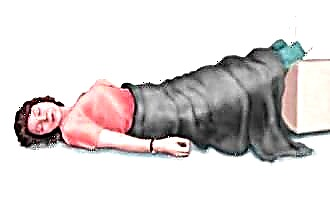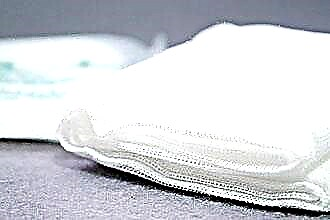Wheezing in the throat when breathing is an alarming symptom that requires attention. A hoarse voice and wheezing can accompany many diseases, among which there are both relatively harmless and deadly. To understand what the wheezing in the throat has arisen and how to get rid of them, it is necessary to define some central concepts in this topic. First, you need to be able to distinguish between the concepts of "wheezing" and "hoarseness".
 Wheezing is the medical definition of abnormal noises that occur during inhalation or exhalation.
Wheezing is the medical definition of abnormal noises that occur during inhalation or exhalation.
Wheezing occurs when the air flow meets an obstacle in its path - phlegm, neoplasms, etc. If the airways are narrowed in some area, a whistle joins the wheeze. Such symptoms accompany many diseases. Among them are pneumonia, bronchitis, heart failure and others.
Hoarseness is a change in voice. Hoarseness (also called hoarseness) signals a malfunction of the vocal cords.
The throat can become hoarse as a result of severe fatigue of the vocal cords, the use of cold liquids or food, and general hypothermia. Frequent stay in dusty rooms can also cause hoarseness.
In this article, we will talk in more detail about what help is required if the throat is hoarse, and what to do if the throat is wheezing when breathing.
Laryngeal dysfunction
The larynx is the organ that sits between the pharynx and the trachea. It performs many functions - it participates in breathing, the act of swallowing and the formation of speech (the vocal cords are located in the larynx).
If the vocal cords are inflamed or compressed by a tumor, the voice sounds different than usual. Hoarseness, hoarseness of the voice may appear, and in some cases it may disappear altogether.
Inflammation of the larynx is called laryngitis. Laryngitis is usually infectious, mostly viral.
Since viruses can more easily penetrate into a hypothermic body, laryngitis usually falls ill after a long time outside in bad weather, as well as drinking ice drinks, ice cream, etc. In addition, the larynx can become inflamed as a result of overstrain of the vocal cords. This often happens with teachers, announcers, presenters, who are forced to speak loudly and for a long time.
Symptoms of laryngitis in adults and children:
- change in voice - hoarseness, hoarseness;
- sore throat, discomfort;
- labored breathing;
- moist superficial cough, the attacks of which are usually disturbing in the morning, after waking up;
- body temperature may rise slightly (usually does not reach 38C);
- general weakness, malaise.
- Voice change can be caused not only by laryngitis, but also by other diseases of the larynx - papillomatosis, syphilis of the larynx, the formation of a benign or malignant tumor. If laryngitis does not respond to standard treatment within 7-10 days, see your doctor.
Laryngitis treatment
What to do to get rid of laryngitis? First, you need to give your vocal cords time to heal. Try to talk for as little as 3-4 days as possible until your voice returns to normal.
You should not speak in a whisper - this requires even more tension from the vocal cords than usual during speech. If you need to say something, speak quietly, but not in a whisper.
Treatment of an inflamed larynx consists in performing the following therapeutic measures:
- gargling with a warm water solution of soda (teaspoon per glass) or salt (teaspoon per liter of water);
- gargling with an infusion of medicinal plants (you can use eucalyptus leaves, chamomile, anise, etc.);
- heat-steam inhalations with mineral water or water with the addition of herbal infusions;
- drinking a lot of water (pure, mineral, as well as in the form of tea, compotes, etc.);
- with an annoying cough, you should consult your doctor about the possibility of using cough syrups (for example, with ivy, plantain extract).
If these recommendations are followed, laryngitis recedes by 3-6 days of illness. Launched laryngitis can turn into a chronic form that is difficult to treat.
What are wheezing types?
Wheezing during breathing can be dry or wet. Determining the type of wheezing plays an important role in the diagnosis.
- Dry wheezing is a wheezing noise when breathing. They occur if the lumen of the airway is significantly narrowed (in the absence of sputum). A sharp narrowing of the bronchi is called bronchospasm. In addition, the lumen of the respiratory tract can be partially blocked by a tumor, cyst, or a foreign object.
- Moist rales accompany diseases in which fluid accumulates in the bronchi or alveoli (sputum, blood, pus, etc.). Moist wheezing occurs with pneumonia, pulmonary edema, tuberculosis and other diseases of the lower respiratory tract, accompanied by inflammation.
It is rather difficult to determine the type of wheezing on your own. It is better to trust a specialist in this matter - a pulmonologist.
Causes of wheezing when breathing
Noisy breathing usually indicates a malfunction of the lower respiratory tract - the bronchi and alveoli of the lungs. When making a diagnosis, the doctor pays attention to which part of the respiratory act the whistling and wheezing appears - on inhalation or exhalation. Wheezing and difficulty breathing on inspiration are observed in cardiac asthma (inspiratory dyspnea), and on exhalation - in bronchial asthma, pulmonary edema (expiratory dyspnea). Also, noises can be observed during inhalation and exhalation.
The main causes of wheezing when breathing:
- long-term smoking;
- the consequences of surgery on the larynx (for example, removal of neoplasms) or on the thyroid gland;
- pneumonia (pneumonia) - in this case, the patient has a significantly increased body temperature and a strong wet cough;
- bronchial asthma - wheezing when breathing is accompanied by shortness of breath, wheezing, rapid breathing, have a paroxysmal nature;
- pulmonary edema - in this case, wheezing is accompanied by a cough with the release of foamy pink sputum;
- bronchitis (inflammation of the bronchi) - accompanied by a dry cough, which turns into a wet one within a few days;
- chronic obstructive bronchitis - inflammation of the bronchi, accompanied by rough wheezing during breathing, shortness of breath, annoying cough and irreversible changes in the structure of the bronchi;
- respiratory allergy (to dust, household chemicals, animal hair, pollen, etc.);
- wheezing combined with swelling of the legs and face may indicate heart problems.

Diagnosis and treatment of noisy breathing
An important role in the diagnosis is played by concomitant symptoms - the presence or absence of cough, sputum discharge, body temperature indicators, etc. Also, the doctor takes into account the patient's profession, his age, past illnesses and other individual characteristics. During the examination, the lungs are listened to, the patient's throat is examined. In most cases, the patient is referred for an x-ray examination of the chest organs (fluorography), and it is also recommended to pass a general blood test, and, if necessary, other tests.
Treatment of noises during exhalation and inhalation is determined by the cause of the disease. Naturally, heart failure requires a different treatment than bronchitis or allergies. After the examination, the doctor will not only diagnose but also prescribe the treatment that suits you. So, if the cause of wheezing is the accumulation of sputum, it is recommended to take mucolytic and expectorant drugs (Bromhexin, Mukaltin, Lazolvan).With dry wheezing associated with bronchospasm, bronchodilators will be required - drugs that expand the lumen of the bronchi. If a patient is diagnosed with bronchial asthma, first of all, an inhaler is selected for him, intended for emergency care when an attack begins. A person suffering from bronchial asthma should always carry an inhaler with him.
Do not self-medicate wheezing. Remember that this symptom can be associated with serious medical conditions that do not respond to home treatment.

 You should not speak in a whisper - this requires even more tension from the vocal cords than usual during speech. If you need to say something, speak quietly, but not in a whisper.
You should not speak in a whisper - this requires even more tension from the vocal cords than usual during speech. If you need to say something, speak quietly, but not in a whisper.

